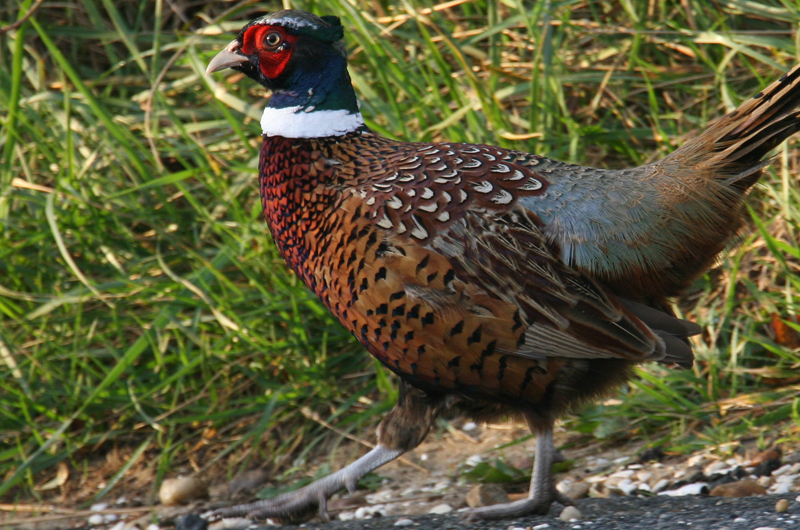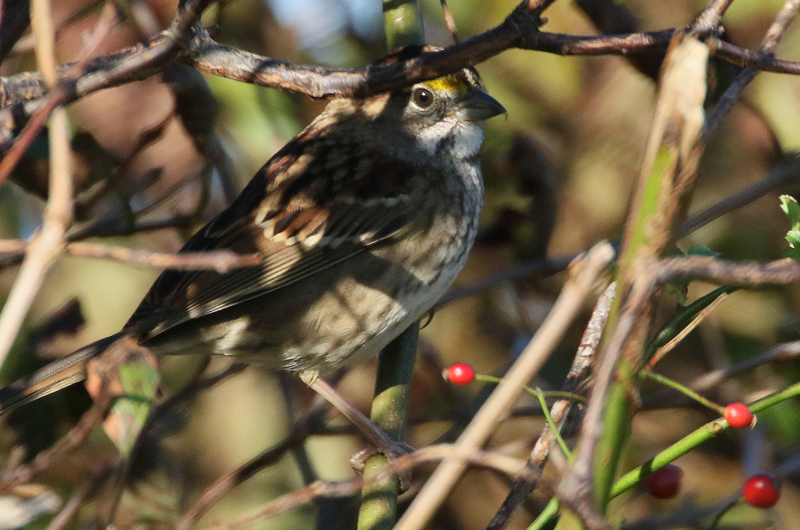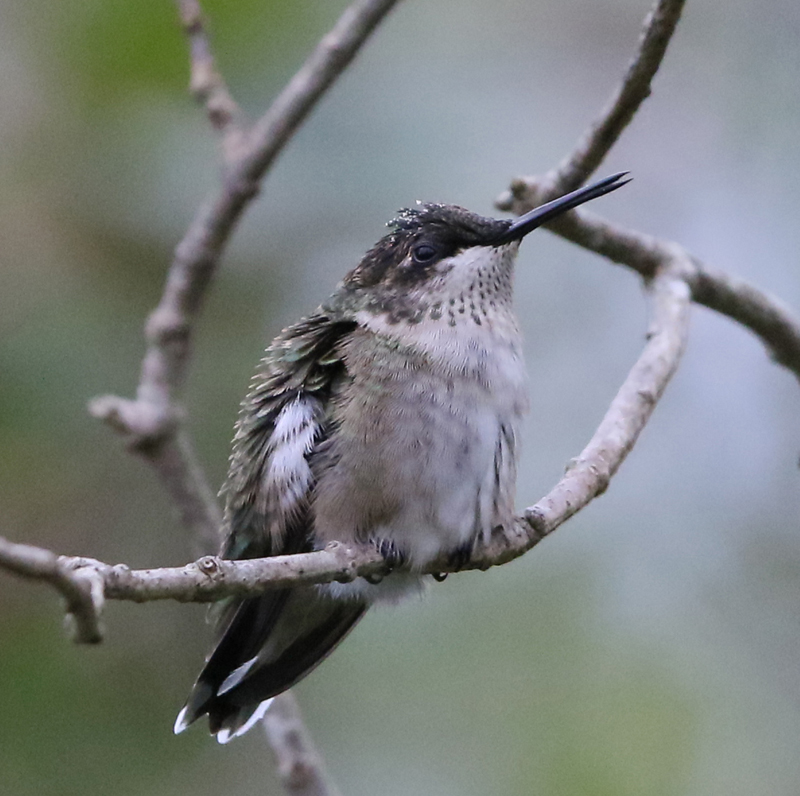Charlie Kernick found a hummingbird visiting his gardens on Oct. 11. It has remained there as I write this column on Oct. 17, and we still do not know what species it is.
If you think sandpipers and sparrows are difficult to identify, you have not tried hummingbirds. Ruby-throated hummingbirds are the only species that breeds in the eastern states, so we generally think it is easy to identify them. But in the fall, several western species may stop by on their southward migration. And that is when the identification gets tricky.
The field marks to distinguish these hummers are not easy to see; you need to look at the shape of the tips of the longest wing feathers, the overall shape of the folded wings, the shape and color pattern of tail feathers, bill shape, and back color. The latter two are relatively easy, but hummers move so quickly that other field marks may not be distinguished even with binoculars. For example, Allen’s and rufous hummingbirds can be distinguished by looking at the width of the outermost tail feathers and the shape of the tips on the second from center pair of tail feathers. Photographs of those features are required. If the hummer predictably visits a feeder, the photographer can set up in a position to see the back of the hummer in good lighting, as it will spread its tail feathers while hovering at the feeder.
It is only fairly recently, maybe 30 years, that we realized that western hummers regularly head east in the fall. This discovery is most likely due to the increased number of knowledgeable birders that were willing to challenge the status-quo theory that all eastern hummers are ruby-throated.
As of Oct. 17, the consensus from experts Jeremiah Trimble and Marshall Iliff is that this is a ruby-throated hummingbird, possibly a first year female. But the vagrant season is still young, and other hummers may show up, so do not put your feeders away yet. Needless to say, contact us immediately if you find a hummingbird.
Bird Sightings
Lanny McDowell heard a great horned owl calling on the morning of Oct. 16 near the southwest corner of Lake Tashmoo. These large owls will be calling more frequently as the autumn progresses so listen for them. A breeding pair will duet together to establish their territory as their mid-winter, late January, breeding season approaches. On Oct. 15, Susan Whiting went up to the Gay Head Cliffs and her highlights included 125 black scoters, nine yellow-rumped warblers, a white-crowned sparrow, and two indigo buntings. She headed back along Moshup Trail and added a yellow-bellied sapsucker, a ruby-crowned kinglet, and a Baltimore oriole. Then she birded downtown Chilmark, where her highlight was one red-eyed vireo. That same day, Phillip Edmundson found two semipalmated sandpipers at the southern end of Watcha Pond.
A few greater yellowlegs and American oystercatchers are still hanging around. Jeff Bernier found 20 yellowlegs and two oystercatchers at Little Beach on Oct. 14, while Luanne Johnson reports finding five greater yellowlegs and three lesser yellowlegs at Ice Pond Road in Oak Bluffs. These species will hang around a little longer into the fall before they head south. Jeff also spotted two dunlin, more than 100 sanderlings and more than 100 black-bellied plovers. These three species will hang around through the winter.
Tom Hodgson found a lingering flock of tree swallows somewhere along the dunes of the South Shore in West Tisbury or Chilmark on Oct. 14.
The first of our winter resident brant have returned to Ocean Park. Harold Brewer spotted a flock of seven resting and grazing on the grass.
On Oct. 13, Lanny McDowell and Bob Shriber found white-throated sparrows and chipping sparrows at the Gay Head Cliffs.
Susan Whiting observed 200 laughing gulls as they were roosting and flying around near Sarson’s Island on Oct. 11.
Pheasants have been reported across the Island in the past few weeks. Jo-Ann Taylor found one in the State Forest on Oct. 12, and Judy Bryant saw one the next day along Barnes Road near the airport. And I heard one calling from near the Eel Pond boat-launching ramp on Oct. 14. These birds, especially if they are tame, are likely birds that were released by the state in advance of the pheasant hunting season, which started on Oct. 14 and runs through Nov. 25. So please beware when you venture out into the field and be sure to wear hunter safety orange.
Sandra Lippens reports two male black-throated blue warblers near the Southern Woodlands in Oak Bluffs on Oct. 6, and an ovenbird a few days before that.
In last week’s column I mentioned that Jeff Bernier spotted a pied-billed grebe at Sheriff’s Meadow Sanctuary on Oct. 9. That individual was still present on Oct. 14, when my Saturday morning Guided Birding Tour found it. We also counted about six black-crowned night-herons; the night-herons were scattered around the shrubbery bordering the pond, with no more than three visible at any one time.
And last but definitely not least, the annual Christmas Bird Count will be held on Friday, Dec. 29. Everyone can participate by counting and reporting the birds that come to their yard. More details will be included in future columns. Sparrows and finches are starting to show up on their southbound migration and our winter residents are starting to show up; please keep us up-to-date by reporting your sightings to birds@mvgazette.com.
Robert Culbert leads Saturday morning Guided Birding Tours and is an ecological consultant living in Vineyard Haven.











Comments
Comment policy »